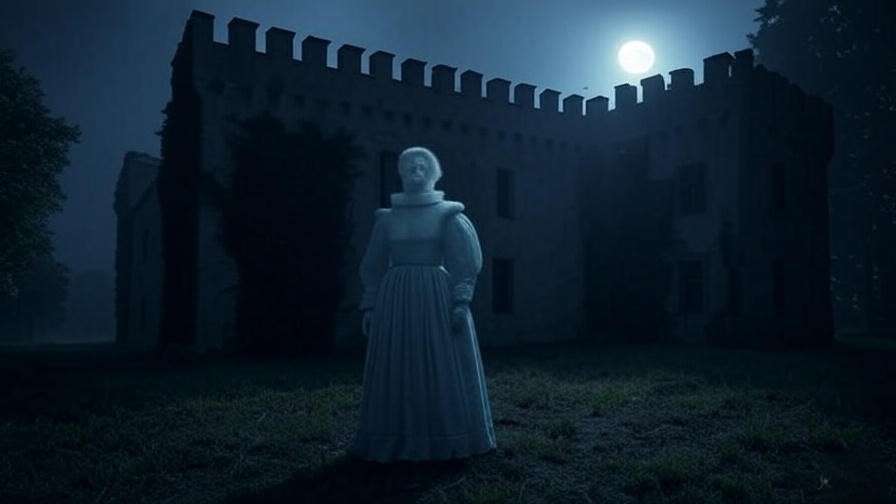What haunts Hamlet that keeps audiences captivated centuries later? Is it the ghost of a murdered king, the torment of indecision, or the universal questions about life and death? William Shakespeare’s Hamlet is a masterpiece that delves deep into the themes in Hamlet—revenge, madness, mortality, and more—offering insights that resonate with students, literature enthusiasts, and anyone grappling with life’s big questions. As a Shakespeare scholar with years of studying Elizabethan drama, I invite you to explore these timeless themes, connecting them to modern dilemmas and personal growth. This article unpacks Hamlet’s profound ideas, providing a comprehensive guide to understanding its relevance today.
Through detailed analysis, expert insights, and practical applications, we’ll uncover why Hamlet remains a cornerstone of literature. Whether you’re a student analyzing the play, a teacher seeking fresh perspectives, or a reader curious about Shakespeare’s genius, this exploration will deepen your appreciation and spark new reflections.
Why the Themes in Hamlet Still Matter Today
The Timelessness of Shakespeare’s Storytelling
Hamlet isn’t just a play; it’s a mirror reflecting the human condition. Written in the early 1600s, its exploration of existential crises, moral dilemmas, and psychological depth transcends its Elizabethan roots. The themes in Hamlet—revenge, madness, mortality, action, corruption, and appearance versus reality—capture struggles that remain relevant. As literary critic Harold Bloom notes, “Hamlet is the most aware of us, and we are most aware of him,” highlighting the play’s ability to speak to universal experiences.
Shakespeare’s genius lies in crafting characters and conflicts that feel alive, no matter the era. Whether it’s Hamlet’s introspection or Claudius’s deceit, these themes resonate because they address fundamental questions: What drives us to act? How do we face mortality? These questions make Hamlet a timeless text for readers and scholars alike.
Relevance to Modern Readers
The themes in Hamlet connect directly to contemporary issues. Hamlet’s internal struggle with indecision mirrors modern battles with anxiety and overthinking, especially in high-pressure environments like work or school. The play’s exploration of madness aligns with today’s conversations about mental health, offering empathy for characters like Ophelia, whose breakdown reflects societal pressures. Similarly, the theme of corruption speaks to distrust in institutions, a sentiment echoed in modern political discourse.
For example, Hamlet’s hesitation to act against Claudius parallels decision paralysis in today’s fast-paced world, where endless choices can overwhelm. By examining these themes, readers can reflect on their own lives, finding clarity in Shakespeare’s nuanced portrayal of human struggles.
Expert Insight: Renowned Shakespearean scholar Stephen Greenblatt argues that Hamlet’s psychological complexity makes it a precursor to modern literature, offering insights into identity and morality that remain unmatched.
Major Themes in Hamlet: A Deep Dive
Revenge and Justice
At its core, Hamlet is a revenge tragedy, but its treatment of vengeance is far from simplistic. Hamlet’s mission to avenge his father’s murder by Claudius drives the plot, yet it raises profound ethical questions. Is revenge ever just? What are its costs? Hamlet’s hesitation contrasts with Laertes’ impulsive quest for vengeance after Polonius’s death, highlighting different approaches to justice.
This theme resonates with modern debates about retribution versus forgiveness. For instance, legal systems today grapple with balancing punishment and rehabilitation, much like Hamlet weighs his moral duty against his doubts. The play’s bloody climax, where nearly every major character dies, underscores the destructive nature of unchecked revenge.
Tip: Reflect on how revenge shapes your perspective on justice. Consider journaling about a time you sought retribution and its outcome, drawing parallels to Hamlet’s dilemma.
Madness and Sanity
Madness in Hamlet is both a strategy and a tragedy. Hamlet’s “antic disposition” is a calculated act to uncover truth, but his erratic behavior blurs the line between feigned and genuine madness. Ophelia’s descent into madness, triggered by her father’s death and Hamlet’s rejection, reflects the devastating impact of grief and societal expectations on women.
This theme connects to modern mental health discussions. Hamlet’s introspective soliloquies reveal a mind wrestling with despair, akin to clinical depression or anxiety. Ophelia’s breakdown highlights the stigma around mental health, particularly for women, inviting empathy from today’s readers.
Expert Insight: Psychoanalytic critic Ernest Jones, building on Freud’s theories, suggests Hamlet’s madness stems from repressed guilt and desire, offering a lens to explore his psychological complexity.
Mortality and the Meaning of Life
Death permeates Hamlet, from the ghost of King Hamlet to the graveyard scene’s grim humor. The famous “To be or not to be” soliloquy encapsulates Hamlet’s existential crisis: Is life worth living in the face of suffering? The graveyard scene, with Yorick’s skull, forces Hamlet to confront mortality’s inevitability, a moment that resonates with anyone pondering their legacy.
This theme speaks to modern audiences grappling with life’s purpose. In an era of existential uncertainty, Hamlet’s questions about death and meaning echo in personal and philosophical debates.
Tip: Try a journaling exercise inspired by Hamlet: What does “to be” mean to you? How do you find purpose in daily life?
Action and Inaction
Hamlet’s struggle to act—his infamous procrastination—defines his character. Torn between duty and doubt, he delays killing Claudius, fearing moral and spiritual consequences. This internal conflict mirrors universal struggles with decision-making, whether in career choices or personal relationships.
For example, Hamlet’s hesitation resembles modern “analysis paralysis,” where overthinking stalls progress. In contrast, characters like Fortinbras act decisively, highlighting the consequences of both action and inaction.
Corruption and Decay
The imagery of rot and disease pervades Hamlet, symbolizing moral and political corruption. Denmark is “rotten,” poisoned by Claudius’s usurpation and deceit. This theme reflects Elizabethan fears of political instability, but it also speaks to modern distrust in leadership and institutions.
For instance, Claudius’s hypocrisy—presenting himself as a benevolent king while hiding his crime—parallels contemporary scandals where public figures conceal corruption. The play’s imagery, like the “unweeded garden” of Denmark, underscores how personal failings ripple outward.
Expert Insight: Scholar Marjorie Garber notes that Hamlet’s decay imagery reflects Elizabethan anxieties about succession and legitimacy, offering historical context for the play’s themes.
Appearance vs. Reality
Deception is central to Hamlet. Characters like Claudius and Polonius hide their true intentions, while Hamlet’s feigned madness manipulates others’ perceptions. This theme challenges readers to question authenticity, a concern amplified in today’s world of social media and “fake news.”
For example, Polonius’s advice to Laertes—“to thine own self be true”—is ironic given his own duplicity, highlighting the gap between words and actions. This theme encourages readers to seek truth in a world of facades.
Tip: Reflect on moments when you’ve encountered a mismatch between appearance and reality, whether in relationships or media, and how it shaped your trust.
How Shakespeare Crafts These Themes
Language and Soliloquies
Shakespeare’s poetic language elevates Hamlet’s themes. Soliloquies like “To be or not to be” and “O, what a rogue and peasant slave am I” reveal Hamlet’s inner turmoil, making his struggles palpable. The iambic pentameter and vivid metaphors—such as comparing Denmark to a diseased body—deepen the play’s emotional and intellectual impact.
For example, in “To be or not to be,” Hamlet’s measured rhythm mirrors his contemplative nature, inviting readers to ponder life’s uncertainties alongside him.
Symbolism and Imagery
Symbols like the ghost, Yorick’s skull, and poison amplify Hamlet’s themes. The ghost represents unresolved justice and the past’s hold on the present. Yorick’s skull, held by Hamlet in the graveyard, symbolizes mortality’s equality—kings and jesters alike return to dust. Poison, both literal and metaphorical, underscores corruption’s spread.
These symbols make abstract themes tangible, helping readers connect emotionally with the play’s ideas.
Character Dynamics
Relationships in Hamlet intensify its themes. Hamlet’s strained bond with Gertrude raises questions of loyalty and betrayal, while his rejection of Ophelia fuels her tragic arc. Claudius’s manipulation of Rosencrantz and Guildenstern highlights deception, reinforcing the theme of appearance versus reality.
For example, Gertrude’s ambiguous role—complicit in Claudius’s rise yet devoted to Hamlet—adds complexity to the theme of corruption, inviting debate about her motives.
Applying Hamlet’s Themes to Modern Life
Personal Growth and Self-Reflection
The themes in Hamlet offer powerful opportunities for introspection. Hamlet’s wrestle with indecision can inspire readers to confront their own hesitations. For instance, his delay in avenging his father stems from fear of moral consequences—a relatable struggle for anyone facing a tough decision. Journaling prompts inspired by Hamlet can help readers explore their values and motivations.
Journaling Prompt: Reflect on a time you hesitated to act. What held you back, and how does Hamlet’s struggle shed light on your experience? Write about how you can move forward with clarity.
Similarly, the theme of mortality encourages readers to consider their legacy. By contemplating Hamlet’s graveyard scene, where he muses over Yorick’s skull, readers can reflect on what truly matters in their lives—relationships, purpose, or impact.
Educational and Professional Applications
For students, understanding the themes in Hamlet is crucial for academic success. When writing essays, focus on a single theme, like revenge or madness, and support it with textual evidence. For example, analyze Hamlet’s “O, what a rogue” soliloquy to explore his self-doubt, citing specific lines to strengthen your argument.
In professional settings, Hamlet’s themes apply to leadership and ethics. The play’s exploration of corruption can inform workplace discussions about transparency and accountability. Hamlet’s indecision also mirrors the challenges of making high-stakes decisions under pressure, offering lessons for managers and entrepreneurs.
Tip for Students: When analyzing Hamlet, use a thematic lens (e.g., feminist or psychoanalytic) to add depth. For instance, a feminist reading of Ophelia’s madness highlights gender dynamics in Elizabethan society.
Cultural and Social Connections
Hamlet’s influence extends to modern media, with its themes echoing in films, TV shows, and literature. Disney’s The Lion King famously reimagines Hamlet’s revenge plot, with Simba as a Hamlet-like figure avenging his father’s death. Similarly, TV series like Breaking Bad explore corruption and moral decay, reflecting Hamlet’s Denmark.
These connections make Hamlet accessible to new audiences, showing how its themes remain relevant across genres. By recognizing these parallels, readers can appreciate Shakespeare’s lasting impact on storytelling.
Example: Watch The Lion King and note similarities with Hamlet’s themes of revenge and self-discovery. Discuss with friends or in a book club how these stories resonate with you.
Common Misconceptions About Hamlet’s Themes
Oversimplifying Hamlet as a Revenge Story
A common misunderstanding is reducing Hamlet to a simple revenge tale. While vengeance drives the plot, the play’s depth lies in its exploration of morality, doubt, and human complexity. Hamlet’s hesitation isn’t cowardice but a reflection of his philosophical nature, questioning the ethics of murder. This nuance sets Hamlet apart from typical revenge tragedies like The Spanish Tragedy.
Clarification: To fully grasp Hamlet, focus on how revenge intertwines with other themes, like mortality and corruption, rather than viewing it in isolation.
Misinterpreting Hamlet’s Madness
Debates persist over whether Hamlet’s madness is entirely feigned or partly genuine. Some readers assume his “antic disposition” is purely strategic, but his erratic behavior—especially toward Ophelia—suggests deeper psychological turmoil. Scholars like Samuel Taylor Coleridge argue that Hamlet’s intellectualism borders on obsession, blurring the line between sanity and madness.
Expert Insight: Coleridge’s view emphasizes Hamlet’s self-awareness, suggesting his madness is a mix of performance and genuine distress, enriching the play’s psychological depth.
Underestimating Female Characters
Ophelia and Gertrude are often dismissed as passive, but this overlooks their complexity. Ophelia’s madness reflects the constraints of patriarchal society, while Gertrude’s ambiguous loyalty invites debate about her agency. Modern feminist readings highlight their resilience and tragedy, challenging stereotypes of them as mere victims.
Example: Analyze Ophelia’s “mad scene” (Act 4, Scene 5) for its poetic beauty and emotional weight, revealing her as a tragic figure shaped by external pressures.
FAQs About Themes in Hamlet
What is the most important theme in Hamlet?
While all themes in Hamlet are significant, mortality stands out for its universal resonance. The “To be or not to be” soliloquy encapsulates Hamlet’s existential crisis, questioning life’s value in the face of suffering. Scholar A.C. Bradley emphasizes mortality as the play’s emotional core, as it forces characters and readers to confront death’s inevitability.
How do Hamlet’s themes relate to modern life?
The themes in Hamlet—like indecision, madness, and corruption—mirror modern struggles. Hamlet’s overthinking reflects anxiety in decision-making, while Ophelia’s breakdown highlights mental health stigma. Corruption in Denmark parallels distrust in today’s institutions, making the play a lens for understanding personal and societal challenges.
How can students analyze Hamlet’s themes for essays?
To analyze Hamlet’s themes, choose one theme (e.g., revenge) and trace its development through key scenes, like Hamlet’s soliloquies or Claudius’s confession. Use quotes to support your argument and consider critical perspectives (e.g., psychoanalytic or historical). Structure your essay with a clear thesis, evidence, and conclusion to ensure clarity and depth.
Why is Hamlet still taught in schools?
Hamlet remains a staple in education due to its rich themes and complex characters, which foster critical thinking. Its exploration of universal questions—about life, death, and morality—helps students develop analytical skills and empathy, preparing them for academic and personal growth.
The themes in Hamlet—revenge, madness, mortality, action, corruption, and appearance versus reality—offer profound insights into the human experience. Shakespeare’s masterpiece transcends time, speaking to modern readers through its psychological depth and moral complexity. By exploring these themes, we gain not only a deeper appreciation for Hamlet but also tools to navigate our own lives, from overcoming indecision to confronting ethical dilemmas.
Revisit Hamlet with fresh eyes, whether by reading the play, watching a performance, or discussing it with others. Share your thoughts on these themes in the comments below, or explore more Shakespearean insights on our blog. Let Hamlet inspire you to reflect, question, and grow.
Call to Action: How do Hamlet’s themes resonate with you? Comment below with your favorite theme or moment from the play, and check out our other articles on Shakespeare’s works for deeper insights.













